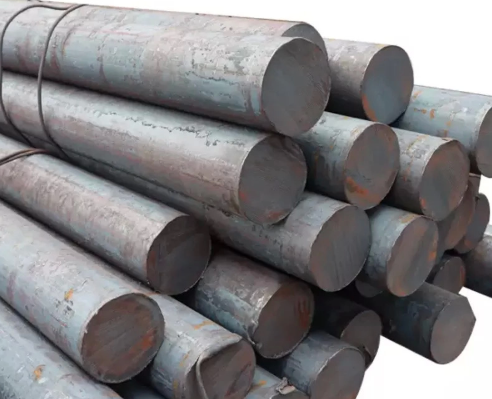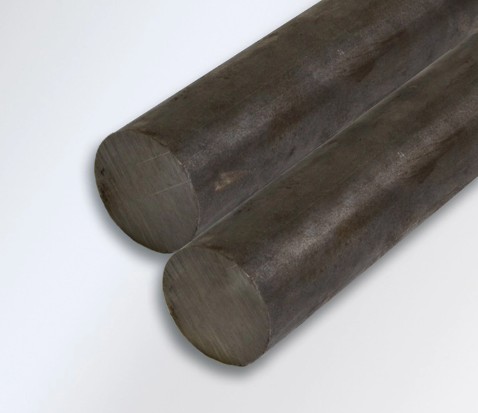Views: 0 Author: Site Editor Publish Time: 2025-09-09 Origin: Site








Carbon Steel is one of the most widely used forms of steel, known for its balance of strength, affordability, and versatility. From pipelines and building frames to automotive parts and cutting tools, it plays a key role in modern industry. But many people still wonder: Is carbon steel stronger than steel? Since steel is a broad family that includes stainless, alloy, and tool steels, the answer depends on how carbon steel compares with these other types. In this article, we’ll explore what carbon steel is, how it differs from other steels, and why its unique combination of properties makes it so valuable across different applications.
Steel is basically iron mixed with carbon. It looks simple, but small changes in composition create very different types of steel. Most steels contain less than 2% carbon, yet that little amount can dramatically change how strong or flexible the material becomes.
Engineers often separate steel into four main categories. Each has unique properties and common uses:
Carbon steel – made of iron and carbon, sometimes called plain steel.
Alloy steel – includes extra elements such as nickel, molybdenum, or chromium.
Stainless steel – contains at least 12% chromium for corrosion resistance.
Tool steels – designed for hardness and durability in cutting or shaping tools.
Here’s a quick comparison table to make things clearer:
| Type of Steel | Key Elements | Main Properties | Common Uses |
|---|---|---|---|
| Carbon steel | Iron + Carbon | Strong, affordable, less rust | Construction, pipelines |
| Alloy steel | Iron + alloys (Ni, Cr, Mo) | High strength, wear resistant | Gears, automotive parts |
| Stainless steel | Iron + Chromium (12%+) | Corrosion resistant, durable | Kitchenware, medical tools |
| Tool steel | Iron + carbon + alloys | Very hard, heat resistant | Cutting, dies, molds |
Steel is everywhere around us—bridges, cars, knives, skyscrapers. The choice of which steel to use depends not just on strength but also resistance to rust, ability to bend, and cost.
Carbon steel is one of the most common types of steel. It’s mainly iron combined with carbon, usually between 0.05% and 2.1%. That small percentage decides how tough or brittle it becomes. Unlike stainless or alloy steels, it doesn’t need extra chromium, nickel, or molybdenum to qualify as carbon steel.
There are four main categories of carbon steel, based on how much carbon it holds:
Low-carbon steel (0.05–0.25%) – soft, easy to bend, very weldable.
Medium-carbon steel (0.25–0.5%) – stronger, tougher, used in machinery.
High-carbon steel (0.5–1.0%) – hard, sharp, perfect for tools and wires.
Ultra-high-carbon steel (1.0–2.0%) – extremely hard, often brittle, found in knives or punches.
Here’s a quick breakdown:
| Category | Carbon Content | Strength Level | Typical Uses |
|---|---|---|---|
| Low-carbon steel | 0.05% – 0.25% | Low strength | Car bodies, pipes, building frames |
| Medium-carbon steel | 0.25% – 0.5% | Balanced strength | Axles, gears, forgings |
| High-carbon steel | 0.5% – 1.0% | Very strong, hard | Cutting tools, springs, wires |
| Ultra-high-carbon | 1.0% – 2.0% | Extremely hard | Knives, punches, dies |
Carbon steel is cheap, recyclable, and energy-efficient to produce. But it rusts more easily than stainless steel and needs coatings, paint, or overlays for protection. That’s why industries balance cost, strength, and corrosion resistance when choosing it.

The short answer: it depends on what type of steel we’re comparing. “Steel” is a broad family, and carbon steel is just one member of it. Some steels are engineered with extra alloys for toughness or corrosion resistance, while carbon steel relies mainly on carbon content for its strength.
When the carbon level goes up, the steel gets harder and stronger. But there’s a trade-off—weldability and ductility drop. That means high-carbon steel can outperform mild or stainless steel in raw strength but may crack or snap under impact.
Here’s how carbon steel compares with other steels:
Carbon steel vs stainless steel – stronger in tensile strength, but stainless resists rust far better.
Carbon steel vs alloy steels – carbon steel can be very hard, but alloy steels balance strength with corrosion and heat resistance.
Carbon steel vs mild steel – carbon steel (especially medium and high-carbon) is much stronger and harder than mild steel.
| Steel Type | Approx. Tensile Strength (MPa) | Notable Features |
|---|---|---|
| Mild steel | 400 – 550 | Ductile, easy to weld, low cost |
| Medium-carbon steel | 600 – 900 | Stronger, used for gears, axles |
| High-carbon steel | 900 – 1200+ | Very hard, cutting tools, springs |
| Stainless steel (304) | 500 – 700 | Corrosion resistant, less brittle |
| Alloy steel (4140) | 950 – 1100 | High strength, wear resistance |
So, is carbon steel stronger than steel? Compared to mild or stainless steel, yes, often. But compared to specialized alloy steels, not always. Strength is not the only factor—engineers must also consider corrosion resistance, toughness, and cost when choosing the right type.
Carbon steel behaves differently depending on how much carbon it contains. The more carbon, the stronger and harder it becomes. But higher carbon also makes it less flexible, harder to weld, and more brittle under stress.
Strength – increases as carbon rises; high-carbon steel can reach very high tensile strength.
Hardness – grows with carbon content, useful for cutting tools and wear parts.
Ductility – drops when carbon is high, meaning the material bends less before breaking.
Weldability – low-carbon steel welds easily, while high-carbon steel often cracks after welding.
Impact resistance – medium-carbon steels usually balance toughness and strength best.
Carbon steel can be heat-treated to change its internal structure. Processes such as annealing, quenching, tempering, and normalizing adjust hardness, strength, and ductility. For example:
Annealing – makes the steel softer and more workable.
Quenching – rapidly cools steel, creating extreme hardness but also brittleness.
Tempering – reheats quenched steel, reducing brittleness and restoring toughness.
Normalizing – produces a uniform structure and improves machinability.
Inside carbon steel, microscopic structures decide how it performs:
| Microstructure | Features | Effect on Strength |
|---|---|---|
| Ferrite | Soft, ductile phase | Low strength, high flexibility |
| Pearlite | Mix of ferrite + cementite | Balanced strength and toughness |
| Martensite | Hard, brittle phase | Extremely strong but not ductile |
| Bainite | Fine mix of ferrite + cementite | Strong, tougher than martensite |
These microstructures change when steel is heated or cooled at different rates. That’s why the same piece of carbon steel can be soft enough to bend or hard enough to cut another metal, depending on treatment.

Carbon steel offers impressive strength for its cost, but like any material, it also comes with trade-offs. Understanding both its advantages and disadvantages helps explain why it dominates some industries yet gets replaced in others.
Carbon steel is valued because it combines strength, practicality, and affordability. It’s widely used in pipelines, machinery, and construction due to these benefits:
High strength at low cost – stronger than mild steel and cheaper than many alloy steels.
Versatility – easy to roll into sheets, forge into tools, or weld into pipelines.
Heat treatable – hardness and toughness can be tuned through quenching or tempering.
Recyclable and eco-friendly – it can be melted and reused without losing core qualities.
Availability – produced worldwide, with many standardized grades.
Despite its strength, carbon steel has weaknesses that limit where it can be used:
Prone to corrosion – rusts quickly without coatings or plating.
Lower ductility at higher carbon levels – stronger steels bend less and may break suddenly.
Poor weldability in high-carbon grades – welds can crack without special methods.
Temperature sensitivity – not suitable for cryogenic or high-heat service.
Maintenance needs – often requires paint, coatings, or protective overlays.
Yes, in most cases. High-carbon steel is harder and stronger, but stainless steel wins when it comes to resisting rust and chemical attack. That’s why stainless is used in kitchens and medicine, while carbon steel is found in tools and machinery.
Not usually. Low and medium-carbon steels bend before breaking. High-carbon steel, however, can snap if struck because it’s less ductile. Heat treatment like tempering reduces this risk.
Sometimes. Raw strength in carbon steel can exceed basic alloy steels, but alloy steels are designed for balance. With chromium, nickel, or molybdenum added, alloy steels combine strength with corrosion resistance and durability.
More carbon makes steel harder and stronger. But it also reduces weldability and ductility. Low-carbon steel bends easily, while high-carbon steel resists bending but cracks under stress.
It depends on the metric. Tool steels and certain alloy steels often beat carbon steel in extreme strength or wear resistance. Carbon steel, though, remains the go-to for cost-effective strength in construction and pipelines.
So, is carbon steel stronger than steel? The answer is not so simple. Carbon steel itself is a type of steel, and its strength depends on how much carbon it holds, plus how it’s heat-treated. Compared with mild or stainless steel, it often shows higher strength and hardness. Against alloy or tool steels, the story changes, because those are engineered for specialized toughness and resistance.
When choosing steel, engineers don’t just look at raw strength. They weigh corrosion resistance, ductility, weldability, and cost. That’s why carbon steel ends up in pipelines, cars, buildings, and tools—it offers a strong, affordable balance for most industries. For everyday projects and heavy-duty engineering alike, carbon steel continues to prove that strength is not only about numbers. It’s also about the right match between material and purpose. At Zhongrun Steel (Foshan) Co., Ltd., we understand this balance. As a trusted supplier of high-quality carbon steel products, including pipes, coils, and structural materials, we provide reliable solutions for construction, energy, and manufacturing industries. With strict quality control and global supply capabilities, Zhongrun Steel helps customers choose the right steel grade for performance, durability, and cost efficiency.